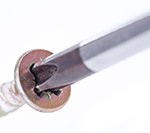In writing technical information for the non- technical reader, the traditional wisdom goes that you are, or should be, “writing to express rather than to impress.”
technical reader, the traditional wisdom goes that you are, or should be, “writing to express rather than to impress.”
So let’s take a look at translating some of those technical terms to help our non-technical readers understand just what we are talking about. And let’s also expand our definition of technical writing to include not only material that is technical in nature, but also information that is new to our readers, or new in a specific discipline or field. And thusly, will also need “translation.”
Just who are these readers? They are managerial – very often the decision-makers. They are your co-workers; government agencies; advisory committees; “The Public”; and…. Here’s where you consider your various specialized audiences.
Three ways to translate the technical terms you use:
The first step is to identify the terms that need to be translated for your audience. You will most likely recognize them as you are writing, but for practice, jot down five words or phrases that may need to be translated for your audience.
1. Informal. This is the way many of us were taught to translate unfamiliar terms, and while it may not be appropriate for strictly technical writing, it can be useful in business writing. To use this familiar method, you will set your definition off with a parentheses ( ), or with commas , ,. If you are defining an acronym, the most common use of this method, you will spell out the term in full, followed by the acronym. After this definition, you may use the acronym in the balance of your piece without further definition.
2. Formal. The formal definition includes three elements: (1) the term itself; (2) the category; and (3) its uniqueness – what it is that makes this term different from others in its category, e.g.,
A Phillips Screw Driver is a hand tool with a “+” shape at the tip, and is specially designed to be used with a Phillips screw.
3. Extended. A sentence, or as much as several paragraphs or even pages, usually combining the above translation methods, and often including visual elements – diagrams, charts, graphs, and so on.
Using your list, translate each of your five terms using one of these three translation techniques. For this practice, try to use each of the techniques at least once.
Then, remember what Peter Drucker said:
“As soon as you move one step up from the bottom, your effectiveness depends on your ability to reach others through the spoken or written word.”
Come back next week. We’ll see you then.
If you like what you’re reading, we invite you to subscribe to our blog, and subscribe to our newsletter.
Gail Tycer offers business writing workshops and presentations, executive coaching,consulting, and writing services. To discuss how we can help, call Gail at 503/292-9681, or email gail@gailtycer.com
